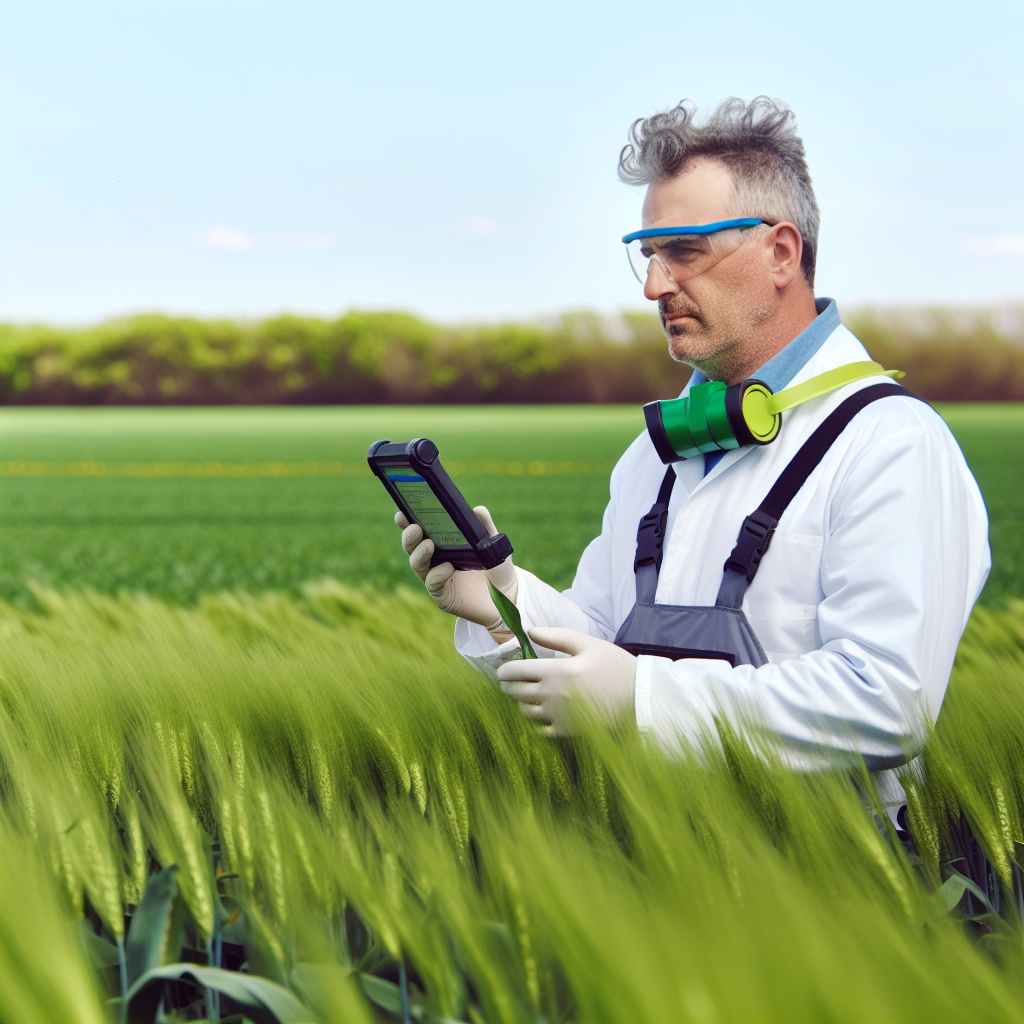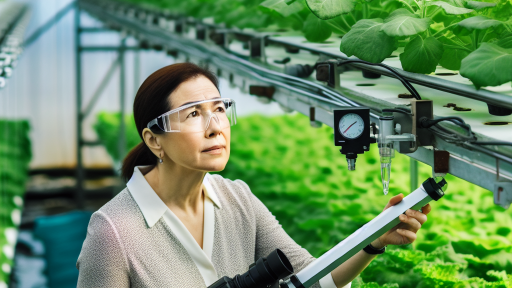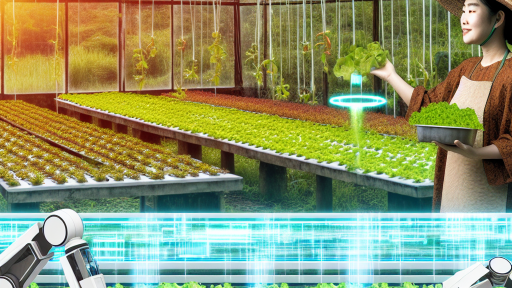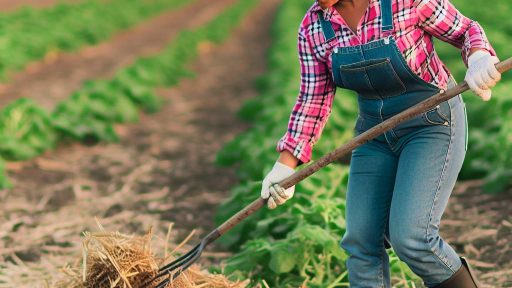Introduction to Crop Health Monitoring and Its Importance
Crop health monitoring is vital for sustainable agriculture.
It ensures high yield and quality production.
Farmers rely on accurate data to make informed decisions.
Effective monitoring can prevent crop diseases.
This proactive approach can save time and resources.
The Role of Technology in Monitoring
Modern farming uses technology for crop health monitoring.
Sensors and drones facilitate real-time data collection.
These tools provide early warnings about potential diseases.
Consequently, farmers can act quickly to mitigate risks.
Benefits of Disease Forecasting
Demand for food is increasing worldwide.
Predictive modeling helps manage crop health efficiently.
Farmers can allocate resources where they are needed most.
This strategy reduces waste and maximizes productivity.
Economic Advantages
Effective crop health monitoring can increase profitability.
Preventing disease reduces the costs of crop loss.
Transform Your Agribusiness
Unlock your farm's potential with expert advice tailored to your needs. Get actionable steps that drive real results.
Get StartedAdditionally, healthy crops fetch higher market prices.
Environmental Impact
Monitoring crop health benefits the environment as well.
It promotes responsible pesticide use.
Farmers can apply their resources more efficiently.
Ultimately, this results in less chemical runoff into ecosystems.
Importance of Crop Health Monitoring
Crop health monitoring is essential for modern agriculture.
It combines technology and predictive models.
Incorporating these practices leads to sustainable farming.
Farmers can ensure food security for future generations.
Overview of Disease Forecasting in Agriculture
Disease forecasting plays a crucial role in modern agriculture.
It involves the prediction of potential crop diseases based on various data inputs.
This proactive approach helps farmers manage resources efficiently.
Seamless integration of technology enhances disease forecasting capabilities.
Importance of Disease Forecasting
Accurately forecasting diseases can significantly reduce crop losses.
Farmers can implement timely interventions to protect their crops.
Moreover, it aids in optimizing the use of pesticides and fertilizers.
This not only protects the environment but also promotes sustainability.
Key Components of Disease Forecasting
Disease forecasting relies on a combination of factors for accuracy.
Weather conditions are one of the primary inputs for predictions.
Soil health and historical data also play significant roles.
Additionally, pest populations can influence disease outbreaks.
Technological Advancements in Disease Forecasting
Modern technology has transformed disease forecasting in agriculture.
Remote sensing tools provide real-time data on crop health.
Machine learning algorithms analyze patterns and suggest forecasts.
Showcase Your Farming Business
Publish your professional farming services profile on our blog for a one-time fee of $200 and reach a dedicated audience of farmers and agribusiness owners.
Publish Your ProfileMobile applications are empowering farmers with accessible information.
Challenges in Disease Forecasting
Despite its benefits, disease forecasting faces several challenges.
Data accuracy can be affected by unpredictable weather changes.
Furthermore, diverse crop variants complicate prediction models.
Lastly, limited access to technology can hinder forecasting efforts.
Factors Affecting Crop Health
Climate
Climate plays a crucial role in determining crop health.
Weather patterns influence growing seasons and crop yields.
Temperature extremes can stress plants and hinder growth.
Moreover, inadequate rainfall or excessive precipitation can affect soil quality.
Farmers must adapt practices to changing climatic conditions.
This adaptation includes selecting appropriate crop varieties.
Additionally, monitoring climate data helps anticipate potential issues.
Soil Quality
Soil quality significantly impacts crop health and productivity.
Nutrient-rich soil fosters strong plant growth and development.
Moreover, soil pH affects nutrient availability for crops.
Regular soil testing can guide amendments needed for better yields.
Additionally, practices such as crop rotation enhance soil health.
Organic matter improves soil structure and water retention.
Consequently, healthy soil leads to more resilient crops.
Crop Variety
Choosing the right crop variety is essential for successful harvests.
Diverse crop genetics can improve resistance to diseases.
Furthermore, specific varieties perform better under certain conditions.
Farmers should consider local climates when selecting varieties.
Additionally, consulting extension services can provide valuable insights.
Ultimately, planting adapted crops enhances overall productivity.
Delve into the Subject: Essential Technologies For Modern Crop Monitoring
Technologies Used in Monitoring Crop Health
Satellite Imagery
Satellite imagery captures vast areas of farmland effectively.
This technology provides real-time data on crop conditions.
Farmers can assess plant health, moisture levels, and pest infestations from above.
Consequently, they can make timely decisions to protect their crops.
Drone Technology
Drones enhance crop monitoring capabilities significantly.
They cover smaller areas rapidly and capture high-resolution images.
Farmers utilize drones to conduct detailed inspections in hard-to-reach areas.
As a result, they identify problems that might go unnoticed from the ground.
Soil Sensors
Soil sensors monitor the parameters essential for plant growth.
These devices measure moisture levels, temperature, and nutrient content.
Farmers receive immediate feedback to optimize their irrigation practices.
Thus, soil sensors play a crucial role in maximizing crop yield.
Weather Forecasting Tools
Accurate weather forecasting aids in anticipating crop diseases.
Farmers use these tools to understand climate patterns and impending weather changes.
Showcase Your Farming Business
Publish your professional farming services profile on our blog for a one-time fee of $200 and reach a dedicated audience of farmers and agribusiness owners.
Publish Your ProfilePreparedness can prevent significant losses due to unexpected weather events.
Furthermore, timely interventions help in disease management strategies.
Machine Learning and AI
Machine learning algorithms analyze data collected from various sources.
These systems predict disease outbreaks based on historical trends.
Farmers can implement preventive measures before diseases spread.
Thanks to AI, crop management becomes more efficient and precise.
Gain More Insights: Effective Cover Crop Management Techniques
Data Collection Methods for Disease Forecasting
Introduction to Data Collection
Accurate data collection is essential for effective disease forecasting.
It provides the foundation for understanding crop health trends.
Types of Data Collected
Plant health metrics represent a key aspect of data collection.
These metrics may include leaf color, growth rate, and moisture levels.
Weather data also plays a critical role in forecasting diseases.
Factors such as temperature, humidity, and rainfall can influence disease spread.
Soi health indicators further enhance forecasting accuracy.
Measurements like pH levels, nutrient content, and compaction are vital.
Data Sources
Farmers and agronomists often collect data manually.
They use tools like charts, scales, and moisture sensors.
Satellite imagery provides a broader view of the agricultural landscape.
Drones can capture detailed images for analysis at the field level.
Remote sensing technologies offer valuable insights into crop conditions.
Integrating Technology for Accuracy
Data collection methods now leverage modern technology.
GPS systems help pinpoint specific locations for data collection.
Mobile applications allow real-time data entry and analysis.
Internet of Things (IoT) devices can automate data gathering.
These advancements provide quicker responses to potential threats.
Collaboration for Better Insights
Collaboration between farmers and researchers enhances data quality.
Shared platforms allow for the aggregation of various data sources.
Industry partnerships can lead to more comprehensive datasets.
This teamwork fosters a better understanding of disease forecasting.
Challenges in Data Collection
Despite advancements, challenges in data collection remain prevalent.
Inconsistent data quality can lead to inaccurate forecasts.
Access to reliable technology is another barrier in rural areas.
Furthermore, training on new technologies is essential for effectiveness.
You Might Also Like: Automated Crop Monitoring Systems For Farmers
Role of Remote Sensing and Drones in Crop Disease Management
Overview of Remote Sensing in Agriculture
Remote sensing plays a critical role in monitoring crop health.
This technology uses satellite or aerial imagery to gather data.
Farmers can identify potential disease outbreaks early.
Moreover, it allows for efficient spatial analysis of crops.
Benefits of Using Drones
Drones provide a detailed view of farm conditions from above.
They can cover large areas quickly and efficiently.
Showcase Your Farming Business
Publish your professional farming services profile on our blog for a one-time fee of $200 and reach a dedicated audience of farmers and agribusiness owners.
Publish Your ProfileAdditionally, drones collect high-resolution images of crops.
This data helps farmers make informed decisions.
Real-Time Monitoring
Drones facilitate real-time monitoring of crop health.
They deliver immediate insights into potential problems.
Farmers can respond quickly to any threats they detect.
Cost-Effective Solutions
Using drones can reduce labor costs significantly.
Farmers can perform tasks that would otherwise require more manpower.
Thus, they enhance overall operational efficiency.
Application of Disease Forecasting Models
Integrating disease forecasting models improves crop management practices.
These models rely on data collected from remote sensing technologies.
They analyze weather patterns, soil conditions, and plant health.
This analysis predicts potential disease outbreaks accurately.
Decision Support Systems
Farmers can utilize decision support systems powered by AI.
These systems process vast amounts of data from different sources.
Consequently, they provide actionable insights for crop management.
Adapting to Climate Variability
Climate change has increased the unpredictability of farming conditions.
The use of drones and remote sensing helps farmers adapt accordingly.
Farmers can adjust their practices based on real-time conditions.
Future of Remote Sensing and Drones in Agriculture
The future holds great potential for advancements in this field.
With ongoing technological innovations, farmers will gain even more capabilities.
Emerging technologies will deepen the understanding of crop health.
Farmers embracing this technology will lead the way in sustainable agriculture.
You Might Also Like: Precision Agriculture Techniques For Modern Farmers

Case Studies: Successful Implementation of Disease Forecasting
Overview of Disease Forecasting Benefits
Disease forecasting enhances crop management efficiency.
Farmers can make informed decisions about resource allocation.
It helps in minimizing the economic impacts of crop diseases.
Additionally, forecasting contributes to sustainable farming practices.
Example: Apple Scab Management
In Washington, data-driven forecasts significantly reduced apple scab incidence.
The Washington State University implemented a forecasting model.
Farmers received real-time alerts about disease risk levels.
This proactive approach improved fungicide application timing.
As a result, crop yields increased while reducing chemical usage.
Example: Integrated Pest and Disease Management
In California, grape growers adopted a combined pest and disease forecasting system.
This system leveraged both weather data and historical disease patterns.
Growers monitored symptoms actively based on predictive models.
Consequently, their reliance on pesticides decreased significantly.
The growers achieved higher quality grapes and better market prices.
Case Study: Wheat Disease Monitoring
Farmers in the Midwest utilized disease forecasting to manage wheat quality.
A collaborative project with local universities provided essential data analytics.
Forecast models anticipated outbreaks of rust and other diseases.
Showcase Your Farming Business
Publish your professional farming services profile on our blog for a one-time fee of $200 and reach a dedicated audience of farmers and agribusiness owners.
Publish Your ProfileThis approach facilitated timely fungicide applications.
Farmers reported improved harvest quality and reduced losses.
Technological Innovations in Disease Forecasting
Machine learning algorithms are revolutionizing disease prediction accuracy.
These algorithms analyze vast amounts of agricultural data.
Satellite imagery and drones also provide real-time insights.
Farmers are now empowered to act before an outbreak occurs.
This technology fosters resilience in agricultural practices.
Challenges and Limitations in Crop Health Monitoring
Data Collection Issues
Accurate data collection is crucial for effective crop health monitoring.
However, farmers often struggle to gather reliable data.
Weather conditions frequently hinder traditional methods of data collection.
Moreover, remote areas may lack the necessary technology.
Consequently, data gaps can lead to inaccurate disease forecasts.
Technological Barriers
Implementing advanced technologies can be cost-prohibitive for many farmers.
Additionally, technical expertise is often required to utilize these tools effectively.
Many small-scale farmers may feel overwhelmed by complex systems.
This results in underutilization of valuable monitoring technologies.
Limitations of Disease Models
Disease forecasting models are often based on historical data.
Such models may not account for emerging diseases or new strains.
Therefore, predictions can become unreliable over time.
Inconsistent data updates further diminish model accuracy.
Environmental Variability
Environmental factors greatly influence crop health.
For instance, sudden weather changes can spur disease outbreaks.
Climate change introduces additional unpredictability into farming practices.
As a result, monitoring systems must adapt to these external factors.
Lack of Farmer Engagement
Many farmers may lack awareness of monitoring systems’ benefits.
Consequently, they may not prioritize investing in these technologies.
Education and outreach efforts can address this engagement gap.
Building trust between scientists and local farmers is essential.
Integration with Existing Practices
Farmers often have established practices that may conflict with new technologies.
Integrating disease monitoring with traditional methods can be challenging.
Moreover, there is sometimes skepticism regarding new methods’ effectiveness.
Finding a balance between innovation and tradition is crucial for adoption.
Future Trends in Disease Forecasting and Crop Health Management
Advancements in Technology
Emerging technologies are transforming disease forecasting methods.
For instance, satellite imaging enables precise monitoring of crop health.
This approach allows farmers to detect issues before they escalate.
Additionally, machine learning algorithms enhance data analysis capabilities.
As data becomes more accessible, predictive models will improve dramatically.
Integration of IoT Devices
Internet of Things (IoT) devices are key in modern agriculture.
These devices provide real-time data on environmental conditions.
Farmers can utilize this information for proactive crop management.
Showcase Your Farming Business
Publish your professional farming services profile on our blog for a one-time fee of $200 and reach a dedicated audience of farmers and agribusiness owners.
Publish Your ProfileFor example, soil moisture sensors inform about irrigation timing.
Consequently, farmers can minimize water waste and combat disease spread.
Collaborative Platforms for Farmers
Collaborative platforms are helping farmers share insights and strategies.
These networks foster knowledge exchange about disease prevention.
Farmers can report outbreaks quickly, enhancing community response.
Moreover, such platforms can connect farmers with agricultural experts.
This collaboration strengthens the overall agricultural ecosystem.
Focus on Sustainability
Sustainability is becoming increasingly important in agriculture.
Farmers are adopting eco-friendly practices to promote crop health.
Integrated pest management reduces chemical dependencies.
Also, crop rotation enhances soil health and resilience.
This shift not only benefits the environment but ensures food security.
Utilizing Big Data Analytics
Big data analytics offers valuable insights into crop trends.
This approach enables farmers to make data-driven decisions.
By analyzing historical data, they can forecast disease outbreaks.
Overall, this leads to timely interventions and resource allocation.
Hence, farmers can optimize yields and reduce losses effectively.
Enhanced Communication with Stakeholders
Effective communication among stakeholders is vital.
Farmers, researchers, and policymakers must work together.
This collaboration leads to better resource management.
Additionally, strong communication networks can aid in rapid crisis response.
Ultimately, this promotes a sustainable agricultural future.
Additional Resources
Understanding the potential applications of Artificial Intelligence in …
Climate Change Impacts on Agriculture and Food Supply | US EPA




